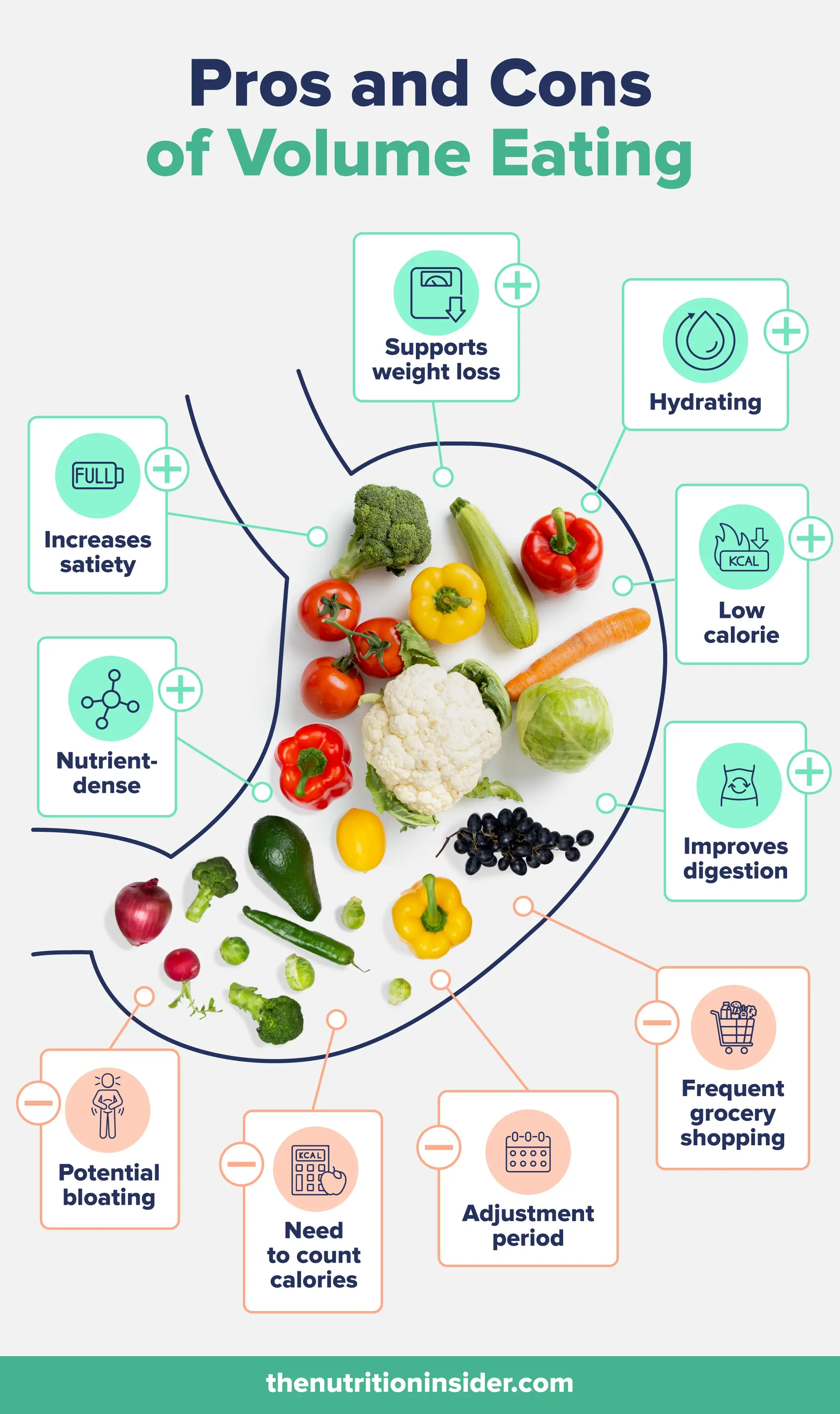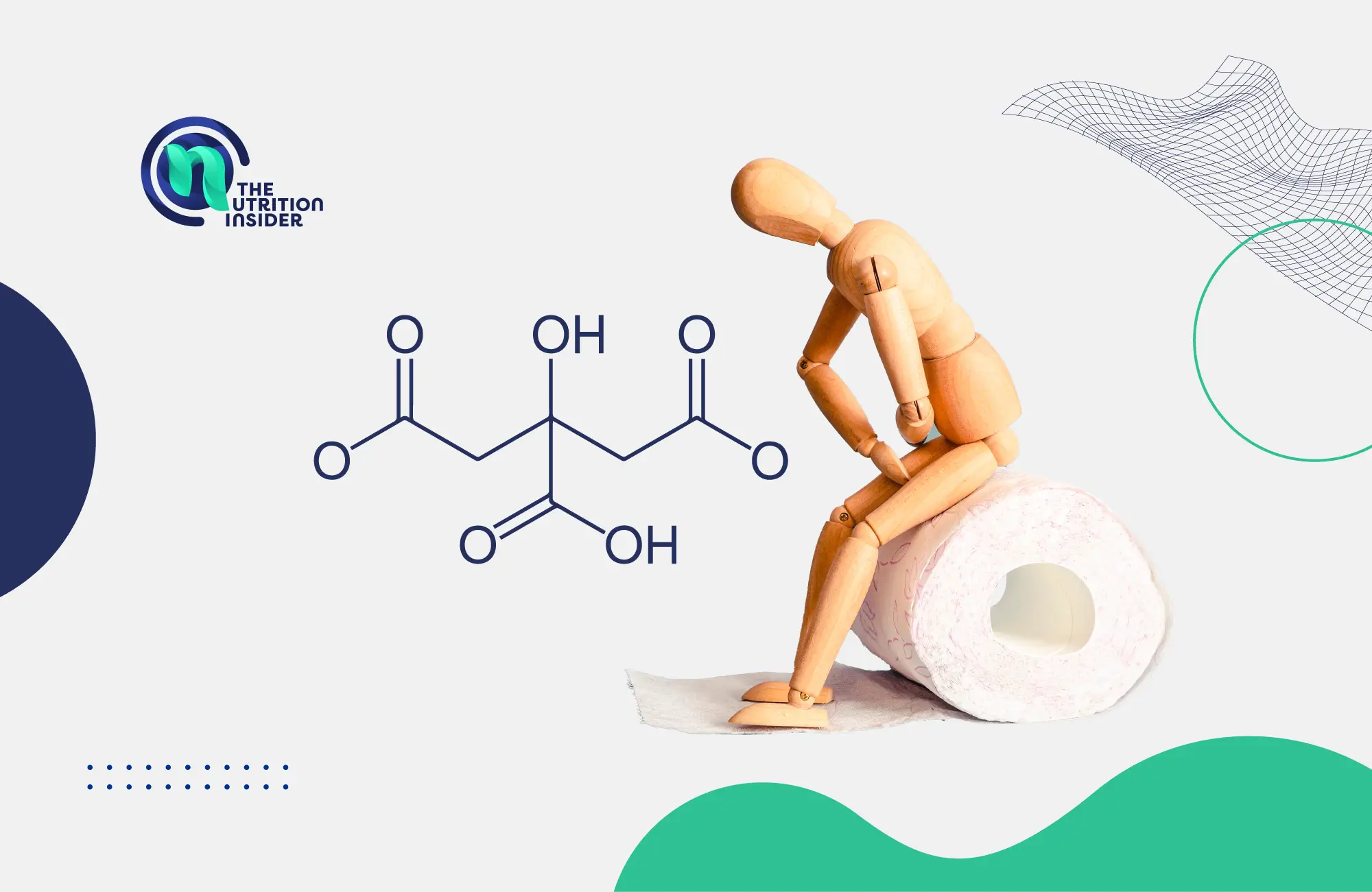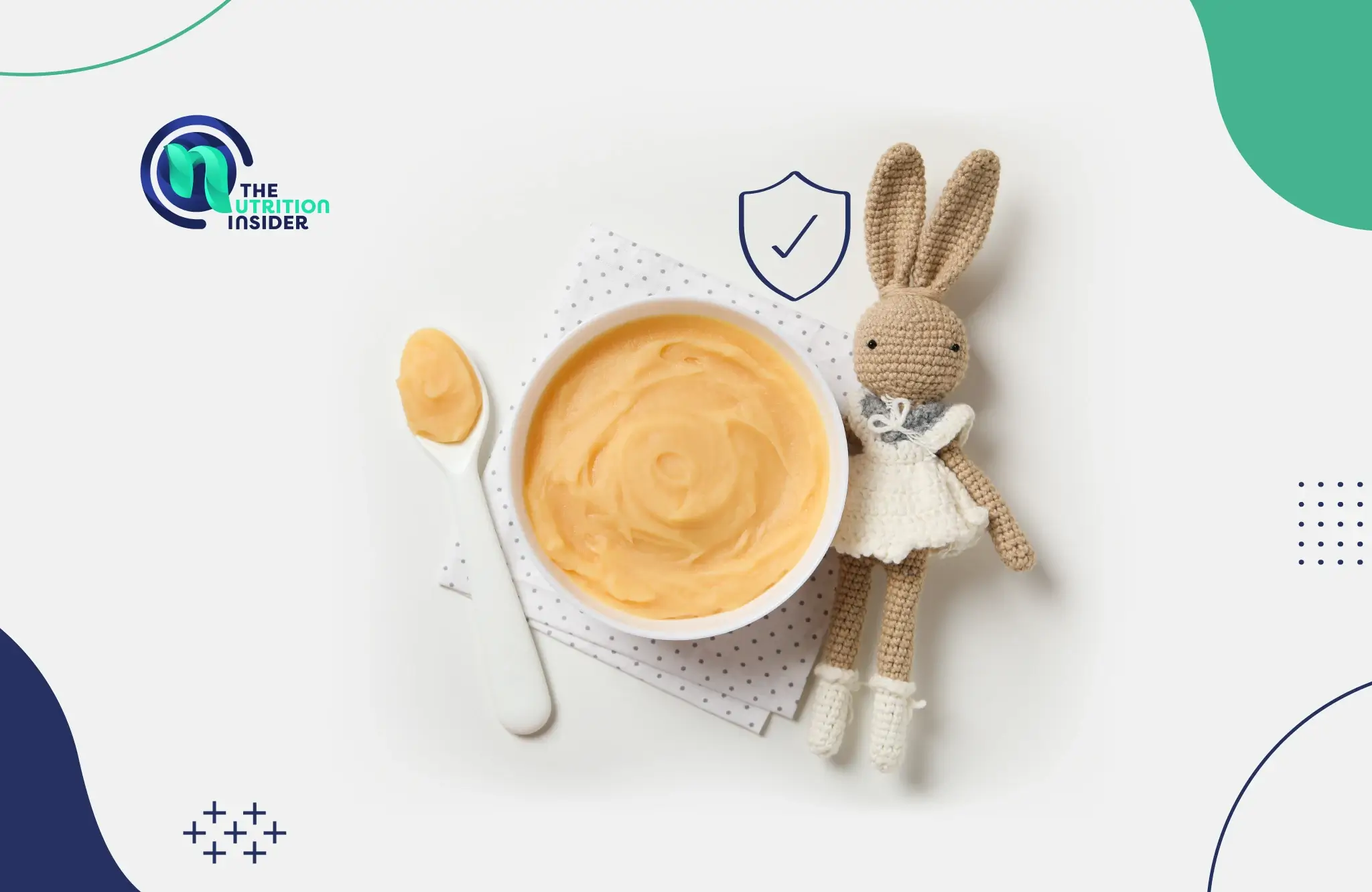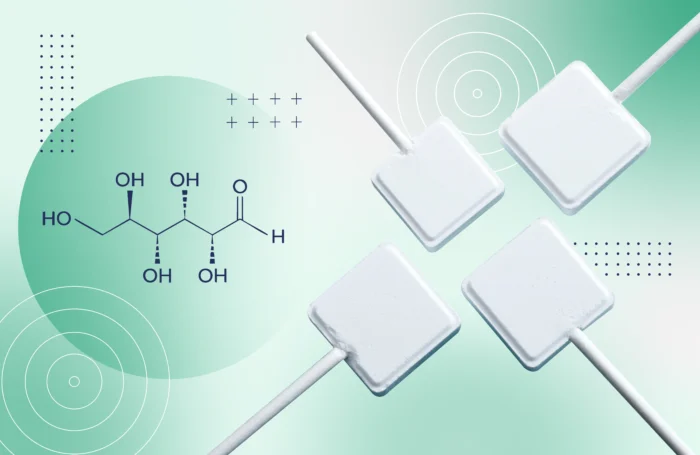This post contains links through which we may earn a small commission should you make a purchase from a brand. This in no way affects our ability to objectively critique the products and brands we review.
What is Volume Eating?
Evidence Based Research To fulfill our commitment to bringing our audience accurate and insightful content, our expert writers and medical reviewers rely on carefully curated research.
Read Our Editorial Policy
Have you ever eaten a meal and felt hungry again less than an hour later? This is pretty common if you’re trying to lose weight and you’re in a calorie deficit.
One way to reduce these cravings is to include plenty of lean protein, fruits, veggies, and whole grains in your diet. Although this is good advice in general, it’s especially helpful if you want to lose weight.
However, some people may still feel these hunger signals, even with a balanced diet. If this is you, you may want to try volume eating.
Volume eating is an eating strategy that involves consuming high-volume, low-calorie foods. This strategy is typically used to dampen hunger signals when eating fewer calories than you’re used to.
We’ll cover the pros and cons of volume eating and some strategies to help you use volume eating to lose weight healthily.
Note from the author: Please do not use this advice to eat less if you are already at a healthy weight or underweight. If you are experiencing any symptoms of an eating disorder such as an obsession with your weight, extreme calorie restriction, or body dysmorphia, please consult reach out here for help: https://www.nationaleatingdisorders.org/get-help/
How Volume Eating Works
Weight gain typically results from consuming more calories than we burn in a day—aka, our total daily energy expenditure (TDEE).
This happens when we eat high-calorie, low-volume foods like butter, olive oil, fatty meats, refined bread products, or sodas. These foods don’t take up much room in our stomachs but do take up a large portion of our calorie quota.
A single restaurant meal can easily meet your entire daily calorie quota—for example, look at the dishes at Cheesecake Factory.
So, despite being calorie-dense, these foods probably won’t keep you full for long, leading to overeating and weight gain.
In contrast, a diet full of high-volume, low-calorie foods such as fruits, veggies, and whole grains helps you feel full and satisfied longer. This is because these foods are physically larger, full of healthy fiber, and are more nutrient-dense than many ultra-processed foods.
And unlike a leathy diet, volume eating involves eating focuses on eating more food quantity wise, not calories wise. This helps you feel full but does not give you the calories you need.
If you often feel hungry, even after consuming high-calorie meals, volume eating may help curb your hunger.

Does Volume Eating Work?
If you’re not used to healthy eating, it can be difficult to manage a calorie deficit and hunger pains when you first start out.
However, volume eating works well at reducing hunger. This is because you are strategically adding the right foods and the right amount of food to each of your meals.
To volume eat successfully you’ll need to track your calories. This will give you a good idea of what a large volume of low-calorie foods looks like.
Once you know approximately how many calories are in a bowl of fruit, in a piece of chicken or fish, a can of beans, a heap of salad, or a plate of mixed vegetables, you can start building meals without tracking as closely.
However, this can take a while. To successfully use high volume eating, we recommend that you use a food tracking app to build your meals for at least a few months before just eyeballing it.
Next, try to plan your meals as much as possible. This will help you avoid snacking between meals and stick to your goals.
If you find it difficult to keep your calories in check because you’re a snacker, this may take some getting used to.
Finally, don’t forget to listen to your hunger cues. If you feel full, it’s okay to save the rest of your meal for later!
What Are High Volume Foods?
Now for the real question, what the heck are high-volume foods, anyways??
In brief, high-volume foods have a high water and fiber content, making them physically large in volume but low in calories. However, they are still nutrient-dense and contain high amounts of vitamins, minerals, and other nutrients
Examples of some high-volume foods include:
- Cruciferous vegetables: cabbage, spinach, broccoli, cauliflower, brussels sprouts
- Root vegetables: potatoes, carrots, beets
- Whole grains: oats, rice cakes, cous cous, quinoa
- Fruits: fresh fruit and dried fruit
- Lean protein: scrambled eggs, chicken breasts, shrimp, pork chops, turkey
- Legumes: beans, lentils, edamame, and chickpeas (plant-based protein options)
- Soups: broth with vegetables and a lean protein
How to Build a High-Volume Meal
Building a high-volume meal is pretty straightforward. Here are some steps to help you create satisfying and filling high-volume meals:
- Start with the sides: Fill at least half your plate with non-starchy veggies like leafy greens or some of the cruciferous vegetables listed above. These will be the main high-volume, nutrient-dense ingredients on your plate.
- Include a lean protein: Include a lean protein such as chicken breast, turkey, or fish or a plant-based protein like tofu, beans, or lentils.
- Add whole grains: A serving of whole grains like brown rice, quinoa, whole-wheat pasta, or oats will give you a healthy dose of fiber and keep you full for hours.
- Don’t neglect healthy fats: Don’t be afraid of fats! Add some avocado, nuts, seeds, or a drizzle of olive oil. This will add flavor and contribute to a feeling of fullness.
- Ready for dessert?: If you’re looking for a healthier dessert option that will keep you full well into the evening, eat some fruits. Try a bowl of mixed berries, an apple, grapes, or orange slices. Fruits are also high in water content, contributing to the volume.
- Stay hydrated: We don’t just mean drinking water. Adding foods with a high water content like soups or stews with a brothy base and veggies can also help you stay fuller longer.
High-Volume Meal Ideas
Breakfast
Vegetable Omelet with Fruit: An omelet with egg whites, spinach, tomatoes, and bell peppers. Serve with a side of mixed berries.
Lunch
Chicken Salad: Combine mixed greens, grilled chicken breast, cucumbers, cherry tomatoes, carrots, and a light vinaigrette. Add a slice of whole-grain bread or a serving of quinoa.
Dinner
Stir-Fry with Rice: Mix broccoli, bell peppers, snap peas, and mushrooms with tofu or lean chicken. Serve over a small portion of rice or cauliflower rice.
Pros and Cons of Volume Eating
Pros
- Increased Satiety: High-volume foods are filling, which helps reduce hunger and prevents overeating.
- Supports weight loss: Eating high-volume food promotes weight loss by minimizing calorie intake.
- Nutrient-Dense: High-volume foods are often healthy, nutrient-dense foods rich in essential vitamins, minerals, and fiber.
- Low Calorie: Helps maintain a caloric deficit without feeling deprived.
- Improves Digestion: High fiber aids digestion and promotes regular bowel movements.
- Hydrating: Foods with high water content contribute to overall hydration.
Cons
- Potential Bloating: High fiber content might cause bloating or discomfort for some individuals.
- Frequent Grocery Shopping: Eating more fresh, perishable food may require you to make more trips to the grocery store and spend more money. Luckily, we have this guide for how to eat healthy on a budget.
- Counting Calories Can Be Tedious: Initially, it might be necessary to track calories to ensure you are not underestimating intake.
- Adjustment Period: It might take some time to get used to this style of eating and to incorporate the preparation and cooking time involved in making your meals into your schedule.
FAQs
What are the pros and cons of volume eating?
Pros: Eating high-volume foods increases satiety, is nutrient-dense, is low in calories, improves digestion, supports weight loss, and helps with hydration.
Cons: High-volume eating may require frequent meal preparation, can cause bloating, necessitates an adjustment period, requires careful meal planning, might involve more frequent grocery shopping, and often needs initial calorie tracking.
What are the best volume foods for weight loss?
The best high-volume foods for weight loss are low-calorie density foods such as: non-starchy vegetables (such as broccoli, cauliflower, spinach, and bell peppers), fruits (like berries, apples, oranges, and melons), whole grains (such as quinoa, brown rice, and oats), lean proteins (like chicken breast, turkey, fish, tofu, and beans), and broth-based soups loaded with vegetables.
How do you start volume eating?
To start volume eating, prioritize high-volume foods and eat fewer foods that have a high calorie density. Focus on incorporating plenty of vegetables, fruits, lean proteins, whole grains, and foods with high water and fiber content into your meals. Tracking your calorie intake initially can help you understand portion sizes and build satisfying, low-calorie meals.








